(c) by Stephen W. Seifert
Executive Director
Opera Colorado
Introduction
The Magic Flute is a fairy tale and a philosophy. It is an adventure-rescue story and a political commentary. It is an entertainment and an invitation to enlightenment. It is, simply stated, and endlessly fascinating work of art.
The Magic Flute involves the audience at a conceptual and intellectual level, through the teachings of Sarastro and the trials of Tamino, but also at an emotional level through the love pangs and near suicides of Papageno and Papagena.
The Magic Flute is ecumenical and classless. All those who aspire to the brotherhood are welcome. Deep intellectual and conceptual truths are available to the most common of us if we are prepared to apply our patience, courage, and faith.
The Magic Flute is a work inclusive of all the major musical styles of opera in Mozart’s day. Effortlessly Mozart combines the coloratura of opera seria in the Queen of the Night, the simple elegance of opera buffa in Pamina and Tamino, simple German song in Papageno, the spiritual and oracular declamations of Sarastro, and even throws in an old German chorale for good measure.
The Magic Flute has been described by Jeremy Noble as an opera with its head high in the clouds and its feet planted firmly on the earth. A “pop” entertainment which becomes sublime. It was an opera designed to entertain the decidedly unroyal audiences in its first run theater, but it also had a profound moral purpose to improve, to inspire, and to enlighten.
As a member of an audience today, you may treat the opera as a charming and tasty entertainment, just as Papageno accepts his simple pleasures – a good meal, lots to drink, and a loving wife. Neither he nor you will be any the worse for that approach. Or, as you choose, you may find in The Magic Flute the message that things are not as simple as they may seem, that an internal struggle is at work within us, and that rituals, faith, love, the struggle for truth, wisdom, enlightenment, the support of equally committed friends, and overcoming the fear of death, will enable us to prevail in that internal struggle. Visiting Mozart’s enlightened world through his work of the Age of Enlightenment, we in the audience today are invited to be free actors able to create our own destinies just as the characters in the opera are able to influence their own lives.
The Magic Flute may itself be thought of as a musical ritual in which the magical effects of music, storytelling, and stage craft link the creative imaginations of all those present in the audience with the world of the sacred or divine. Just as Beethoven’s 9th Symphony is a musical journey, or ritual, that invites listeners to join the joyful brotherhood of mankind, The Magic Flute is a musical ritual whose passage by the audience may change them.
Multiple Interpretations
Almost no other opera, at least no other opera outside the multi-layered works of Richard Wagner, is open to quite so many interpretations as is The Magic Flute. The Italian author Italo Calvino used the term “open work” to describe those works of art that are susceptible to multiple valid meanings, multiple meaningful experiences. In that sense, The Magic Flute is wide open.
The author Andrew Porter said of Flute: “The libretto and the score contain between them more ‘information’ than any single production of the opera can hope to compass. That is why we can see it again and again, making ever-new discoveries. Each performance of the piece offers but a partial realization of myriad possibilities.” Or, as Stanley Sadie has said: “The Magic Flute is an entertaining, pantomime-like tale about a prince, attended by a comic birdcatcher, who is ultimately united in an ideal marriage with a damsel formerly in distress. It is also a serious allegory about the nature of Man and his search for harmony within himself.”
Among the many ways in which The Magic Flute can be experienced and has been interpreted are these:
The music itself
The score contains a wonderful mixture of popular tunes – lied – and opera seria arias, of memorable whistleable or sing-along type songs and the most imposing coloratura challenges. The evening in the opera house delivers a masterful mixture of burlesque and solemnity, of bel canto and opera buffa.
Enlightenment Philosophy
The Magic Flute is sometimes argued to be an allegory for social justice and freedom of belief. The ideas and ideals of the Enlightenment philosophers and hopes of the French Revolution take theatrical form.
Political diatribe of the day
Some argue that the characters in The Magic Flute are storybook representations of important public figures of Mozart’s day. For instance, under this theory, the Queen of the Night is Maria Theresa, who represented conservatism, repression, and ambition for absolute power. Sarastro is Ignaz von Born, the leader of the most prominent Masonic Lodge in Vienna. Monostatos is the Catholic church, or perhaps more specifically the black-robed priests of the Jesuit Order. Tamino is a role model for Leopold II, who had recently ascended the throne as Emperor of Austria, or as a role model for Francis II, Leopold’s son, who was even more reactionary than Leopold and was thought by the progressives to need even more “education.” Under this view of the opera, if our leaders, like Tamino, are filled with virtue and righteousness, then earth will be like heaven.
Commentary on the French Revolution
A Jacobin pamphlet published in London in 1795 claims Flute as a commentary on the French Revolution – The Queen of the Night is, according to this approach, the ancien regime, Pamina is freedom, Sarastro is the wisdom of better legislation, the priests are the National Assembly, the Three Boys are intelligence, justice, and patriotism, which guide the people, who is represented by Tamino.
Anti-Jacobins, on the other hand, claimed it for their own – Sarastro to them represented anti-revolutionary sentiment and those initiated into his rituals are those dedicated the preserving the old order.
Masonic proselytizing
Clearly The Magic Flute is brimming over with symbolism and hidden meanings. The origins of these symbols and meanings are the secret rituals and ceremonies of Freemasonry. Mozart and Schikaneder were members of a Masonic Lodge in Vienna. Thus, the journey that Tamino takes in the opera is thought to be representative of the initiation that a new Mason would have undergone in Vienna in the 1790s.
Although the origins of Freemasonry predate the Age of Enlightenment, the fundamental concepts extolled in both could co-exist comfortably. Truth is to be found in science and reason. Nothing is quite as it seems, and certainly not as simple as it seems on first blush – one must dig deeper to be enlightened. So, in the story, Tamino has to learn through hard work, patience, and the application of reason about the Queen of the Night’s true nature, and about Sarastro’s.
Fairy tale magic story
The Magic Flute has been taken on one level as a charming fairy tale or magic story. Children (of all ages), in this view, are the best recipients of this charm. To the extent there is something more than adventure in the story, it is the kind of teaching of straightforward morals about truth and integrity that one might find in Grimm. From this point of view, it is completely understandable that someone such as Maurice Sendak should have designed sets and costumes for the show.
Personal psychological interpretation or allegory
We might also acknowledge that The Magic Flute is about a person becoming a “complete” person. The great film version of this opera by the Swedish director Ingmar Bergman treats the story in this way as an internal or psychological exploration about a journey and personal growth. Each of us is a complex character made up of multiple elements, including those which the various characters in the opera represent — the good and the bad; simple and noble; hedonistic and aspirational; and so on.
Jungian interpretation
Yet another psychological approach sometimes taken to understanding The Magic Flute is to apply the theories of Carl Jung. In this approach, we find Jung’s “archetypal figures” – Sarastro is the Wise Old Father figure; the Queen of the Night is the Destructive and Formidable Mother. Confrontations between animus and anima are identified, and so on.
A Living Depiction of the 22 Major Aracana Cards of the Tarot Deck

One author claims to have found another key to understanding The Magic Flute. Mozart and Schikaneder both played cards. The deck they used was a version of the mediaeval tarot deck. (The deck of 52 cards we use today descends from the same source.)
The overture and 21 following musical numbers make a total of 22 different musical depictions. The mediaeval tarot deck contained 22 Major Arcana cards, reflecting the physical and spiritual forces at work on humans and culminating in the card called “The World,” which is a balance of all necessary elements, light and dark.
In this view, The Magic Flute puts on the stage living versions of each of these physical and spiritual forces, ending with the last musical number in which order and balance are restored to the realms of Sarastro and the Queen of the Night.
The number of scenes actually exceeds the number of musical sections. In addition, the last numbered musical section prodigiously includes Pamina’s attempted suicide, the passage of the final tests by Tamino and Pamina, Papageno’s attempted suicide, his discovery of Papagena, the final assault on the kingdom of the sun by the forces of the Queen of the Night, and the final chorus hailing beauty and wisdom.
In other words, it might be argued that for this Tarot theory to have any currency one must wink at a few items. But keep in mind that the composer and librettist created the numbering of the musical sections and that the last lengthy musical section does begin with the Three Boys announcing what will be the result of all the ensuing action, thus tying all of it to the culminating Tarot card “The World”:
Soon, heralding the morning, the sun will shine forth on its golden path. Soon superstition will vanish, soon the wise man will triumph. Oh, sweet repose, descend, return to the hearts of men; then earth will be a realm of heaven, and mortals will be like gods.
A love story
The tales told in this opera certainly also amount to a love story of sorts. It’s a bit of a conceptual courtship, but it ends with the union of a man and a woman. It’s a love story about transcending sensual love in order to attain spiritual love.
Part of the Mozartian Canon of operas
Others take a step back and look at The Magic Flute as but one work among many in Mozart’s most well-considered operas. From their point of view, the opera should not be analyzed by itself, but rather in relationship to all the other works, and to all the things that Mozart was trying to tell us through his art. The same kind of analysis is often done with Wagner’s 10 canonical operas, and similarly with Verdi’s principal operas.
According to this theory, Mozart was always wrestling with certain issues, and he used different operas to present different arguments or points of view with respect to those issues. For instance, the role of women. According to these authors, if one wants to understand how Mozart viewed the role of women, one would be ill-advised to stop with either the fickle and susceptible ladies of Cosç or the high-minded and faithful Pamina in Flute. One must consider both those shows to see that Mozart was working out his various feelings.
Star Wars
For an interpretation, or more accurately a comparison, that is right up to date, consider the similarities between Flute and George Lucas’ Star Wars series. Luke Skywalker is Tamino, Princess Leia is Pamina, Darth Vader is the Queen of the Night, Obi Wan Kenobi is Sarastro, C3PO is Papageno. The light saber is like the flute. It’s a story of self-discovery, a story of the internal struggle between good and evil.
History of the Composition of The Magic Flute
The Magic Flute was written in the last year of Mozart’s life. He had been in Vienna for 10 years, but it was a tough town, and Mozart was considered something of a novelty the effect of which had worn off over those years. Younger and newer lights were taking up some of the attention Mozart still deserved. He was teaching and doing commission work to pay the bills, and even that wasn’t generating enough income. He often had to beg friends to make loans to him.
Emanuel Schikaneder proposed the Flute idea to him. Schikaneder was five years older than Mozart, and he outlived him by more than 20 years. He had been connected with a traveling theater company for several years appearing in Southern Germany and Austria in comedies, tragedies and singspiele. He was a serious and a comic actor and also wrote plays, with at least 99 works believed to be his, some of which were simply for the spoken theater and some of which were librettos for musical works. As an actor he was particularly famous as Hamlet and King Lear.
In 1789 Schikaneder opened a theater called the Theater auf der Wieden, which specialized in works in the Viennese comic tradition. One of the actors in that theater was Carl Ludwig Giesecke, who, soon after Schikaneder’s death, claimed to have been the author of Flute. While he was not likely the sole author, he may well have had some influence on the libretto. (He, too, was a Freemason.)
We don’t know exactly when Mozart started composing, but it’s clear that he was working on the opera in June 1791. By July 2 Act 1 was finished. Soon he received two famous commissions, which he needed for the money. One was for an opera in honor of the coronation of Leopold II, Austrian emperor, as King of Bohemia, to be performed in early September in Prague. It was to be La Clemenza di Tito. He was also approached by Count Walsegg-Stupach to write a requiem for his recently deceased wife, secretly so that the Count could claim to have written it himself. Tradition has it that Mozart took this commission as a premonition of his own death and that the requiem he was writing was really for himself.
Thus, in the last months of his life Mozart wrote three major works, each of which was in a genre he had not worked in for a long time – opera seria (La Clemenza di Tito); singspiel (Flute); and sacred music (Requiem). Two were commissions. The Flute was his own project.
Mozart finished most of The Magic Flute before beginning work on Clemenza and the Requiem. He still had not finished the overture, the Priests’ march that opens Act 2, and possibly three other numbers in Act 2. With that much done, however, Mozart left Vienna in August for Prague where Clemenza was performed on September 6. In mid-September Mozart returned to Vienna and finished Flute on September 28, two days before its premiere on the 30th of September 1791. The opera was not an immediate hit, but over the course of a few weeks it gained in popularity.
Mozart directed the first and second performances. Flute had 20 performances in October and long remained in Schikaneder’s repertoire. Mozart saw several performances in October and reported to his wifein a letter that the opera was becoming more and more esteemed. He told her that he was particularly pleased with its growing “silent approval.” At one performance he played the glockenspiel while accompanying his friend Schikaneder and intentionally mis-timed the bells as a joke on his friend. He also took his mother-in- law to a performance and his son Karl to another. Salieri, the chief court composer, attended often, always applauding and cheering enthusiastically.
Within 10 weeks after the premiere of Flute, Mozart died on December 5, 1791. Flute remained one of the most popular operas in the German repertory through the end of the century. Goethe thought it a work of high art and even planned a sequel. Its popularity in France and England was not as great. Often it was performed in Italian translation as Il flauto magico. It had a famous revival in 1911 in England, in English, and has remained firmly in the repertoire of all Western nations since.
Freemasonry and The Magic Flute
In understanding Flute it’s important to understand something about Freemasonry. Mozart became a Mason in 1784 – Schikaneder and Giesecke were also Freemasons. The Masons of Vienna saw themselves as a philosophical group persecuted by the Hapsburgs and the Catholic Church. Indeed, the Pope had issued two edicts decrying Freemasonry.
Certain elements of The Magic Flute find Egyptian heritage. The gods Isis and Osiris are invoked. Egyptian images and architecture appear. This is a magic land to which Masonry traced some of its origins. Likewise, ancient Persia was viewed as a source of Freemasonry. The character Sarastro’s name is certainly derived from the ancient Persian prophet Zoroaster.
Entire books have been written about the Masonic symbolism contained in The Magic Flute. Here are but a handful of examples. The number three held significance in Masonry. Thus, we find three strongly emphasized chords in the overture, three Ladies in the service of the Queen of the Night, three Boys who lead Tamino and Papageno on their quest, in the original cast three slaves and three priests, three temples, three knocks on the doors of the temple, and three flats in the key signature of E flat, the home key of the opera. Other numbers are aslo significant in Masonry. For instance, the 77 strokes of the bastinado which Monostatos is to receive at the end of the First Act hearken to the idea that in Masonry the number 7 represents wisdom. The serpent which chases Tamino, the padlock used to punish Papageno for telling a lie, the portrait of Pamina, the flute and bells, the gender of some of the characters, the references to air, earth, fire, and water, the allusions to darkness and the sun, the colors of certain costumes – all these things can be tied to Masonic iconography.
But the opera was not written for a closed circle of the initiated. It was written for a suburban theater, a popular, not a highbrow theater. One of the amazing things about Flute is that it works on so many different levels, and may either be enjoyed simply for its music and charm, or may be debated and discussed at length as a meaningful treatise on human existence. Or both.
Sources and Possible Sources of the Libretto
Scholars have identified nearly as many sources and possible sources for the stories used in The Magic Flute as interpretations of those stories. Among those literary forefathers are these:
Sethos: Histoire ou vie tire des monuments, anecdotes de l’ancien Egypte
A novel by the Abbe Jean Terrason published in Paris in 1731 and translated into German in 1732 and again in 1778. Three ladies are found in Sethos; Tamino assumes characteristics of Sethos; Darkness yields to Light in Sethos. Terrason’s use of the sun as a symbol of enlightenment and underground caverns as symbols of the shadowy pathways of life were quickly accepted into 18th century Freemasonry, as was the concept of science as a liberal influence.
Dschinnistan
A collection of fairy tales assembled by Chritoph Martin Wieland, one of which was Lulu, oder Die Zauberflîte, by A.J. Liebeskind, which appeared in the third volume of the collection in the mid-1780’s. Three boys are found in Dschinnistan. The Queen of the Night assumes characteristics of Queen Daluca. The boy gets the girl – in Lulu a prince, Lulu, is sent by a good fairy to rescue her daughter, Sidi, from the clutches of an evil magician, Dilsengbuin, and is equipped with a magic flute for the purpose. He succeeds after various adventures, and these include a scene in which he enchants animals of the forest with his flute.
Other Plays and Operas
Osiris, a Masonic opera by Naumann
Oberon Kînig der Elfen, an opera by Wranitzky
Sonnenfest der Brahminen a play by Hensler
Il re cervo a play by Gozzi
Il purgatorio di San Patricio, a play by Calder¢n
Kînig Thamos, a play by Gebler
Kaspar der Fagottist, a play by Muller
The Orpheus Myth
Orpheus was viewed by NeoPlatonic philosophers as one of the old sources of Plato’s ideas. Along with Orpheus in this group were the Persian Zoroaster and the Egyptian Trismegistus (the Egyptian god Thoth, the legendary author of works on alchemy, astrology, and magic.) In Flute, Tamino represents Orpheus, Sarastro is Zoroaster, and Pamina’s father, who dies before the opera begins, but who created the magic flute, is the Egyptian.
The Persephone Myth
The daughter of Demeter and Zeus was abducted by Hades but rescued by her mother and thereafter spent six months of the year on earth and six months in the underworld.
The Eleusinian Mysteries were sacred rituals that were the most important of ancient Greek religious festivals. The people of the town of Eleusis observed the mysteries, which were later adopted by the city of Athens as an official festival. The ceremonies included a priest’s address to the mystoe, the initiation candidates, a cleansing in the sea, a sacrificial rite, and a procession from Athens to Eleusis, where the initiation occurred in secret ceremonies. The tale of the search of Demeter through the underworld for her daughter Persephone was probably reenacted at the initiation. It was related to the search for immortality and happiness in a future world, which was the presumed purpose of the ceremonies. The Eleusinian mysteries were probably celebrated until the 4th century AD, when Eleusis was destroyed.
The Aurora
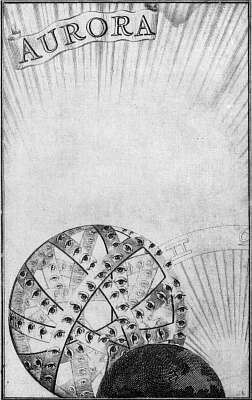
This book, written in 1612 by Jakob Bohme, deals with integrating Hermetic elements into the Christian tradition. Bohme had a large influence on the intelligentsia of the 18th century. Bohme believed that man is naturally a part of three different universes, each of them divine in origin. There are the outer physical world and two inner worlds, both eternal. One of those inner worlds is dark, which should remain dormant, and the other is light, the world in which we are unified with the kingdom of Christ. The dark world manifests itself when not dormant in a desire to set ourselves above and beyond our natural positions in the divine order.
Bohme described the evil forces working within us against the Christ-like forces as a fierce lion (“grimmige Lowe,” which is the same phrase used to describe the lion in the original version of Flute – the version calls for a lion to chase Tamino in the opening scene. Apparently the reason for changing the lion to a serpent was that 18 days before the premiere, Emperor Leopold decreed that a satire called “Biography of the Lion RRRR,” the title of which was a play on the emperor’s own name, be suppressed. Perhaps Mozart and Schikaneder felt that to start an opera by killing a lion on stage would be too close a call.). Bohme describes Christ as being like a strong tree, and Pamina explains in Flute that her fathercarved the magic flute from a thousand year old oak tree in a magic hour. Is it possible, therefore, that Mozart and Schikaneder knew some Bohme and their images were meant to be representations of Christian philosophy (albeit far removed from the organized Catholic church)?
Bohme also proposed that the sun was at the center of the universe and the outer limits of the universe were composed of the Wheel of the Zodiac, which, like a clock measuring time, controlled the temporal aspects of man’s existence. Could it be, thus, that the Queen of the Night is that Zodiac, that is not evil in itself, but simply represents the darker impulses that need to be controlled by spiritual guidance and enlightenment?
Bohme also dealt with the four elements – pride or sanguinity (air), covetousness or melancholy (earth), envy or phlegmatic behavior (water), anger or choleric behavior (fire).
Bohme also talked about the original state of man before The Fall. Adam contained within himself the true divine image (“Bildnis”) and was both male and female. The outer fiery male was characterized by beauty (as the Three Ladies describe when talking about Tamino), and the inner watery female was the characterization of wisdom. This helps explain the arias Dies Bildnis, Mann und Weib, and Bei MÑnnern, and finally the last words of the opera have beauty and wisdom crowned – “die Schînheit und Weisheit mit ewiger Kron’.”
Bohme postulated that when the outer male part disturbed the divine image he provoked the withdrawal of the inner female partner, which could only be satisfied by the creation of a separate physical female, i.e. Eve, and the relation between male and female became purely physical, instinctive, and animal. The spiritual path involves the rediscovery of the female intuitive wisdom within us, which is the path back to our true spiritual home. Tamino and Pamina are the embodiments of those two separated paths, which are reunited in the course of the opera.
The Tarot Deck
The opening sung musical piece is numbered “2” in the original score, thus conferring on the overture the number “1” – very unusual – but which makes the total of musical sections in the opera 22. Is there Masonic significance in that number? If not Masonic, perhaps another. The traditional tarot deck consists of 78 cards, broken into 56 Minor Arcana and 22 Major Arcana. The 22 Major Arcana are supposed to represent the physical and spiritual forces of life – illness, death, storms, strength, power, love, and religion. (The 56 other cards are divided into four suits – spades, hearts, clubs, and diamonds. Each suit contains ten numbered cards, ace through ten, and four court cards, King, Queen, Knight, and Page. Today’s ordinary deck of playing cards is a direct descendant of 15th century tarot packs, with the Page eliminated and the Joker or Fool from the Major Arcana thrown in.)
The first published study of tarot appeared in a 9 volume work by Court de Gebelin called Le Monde primitif, which tried to show a relationship among the different religious and cultural traditions of the world. One of the original subscribers to the 9 volume work was Thomas von Trattner, in whose house Mozart lived in the months before he became a Freemason in 1784. The 8th volume, issued in 1781, contained a study on tarot cards in which he attempts to prove that the tarot are actually the missing Book of Thoth, the last surviving authentic record of the ancient Egyptian mysteries. (The Egyptian god Thoth was the legendary author of works on alchemy, astrology, and magic.) The Egyptian connection with Flute is clear, and the opera was even known in Mozart’s time by the subtitle “The Egyptian Mysteries.”
Mozart and Schikaneder would have been familiar with tarot as a card game. The so-called “Marseilles” pack of tarot cards was in use at the time. McNair believes that:
Card X, The Wheel of Fortune, is represented by the overture.
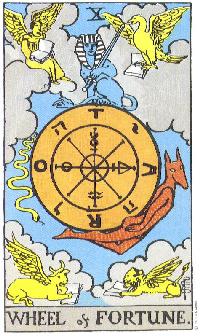
Card XI, Force, contains a lion whose jaws are being held open by a lady, and thus is the first acted scene of the opera, in the original setting.
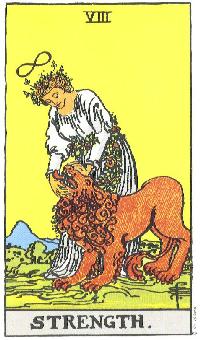
Papageno’s first aria might be represented by the unnumbered card The Fool, which is the origin of the Joker in our modern decks of cards.
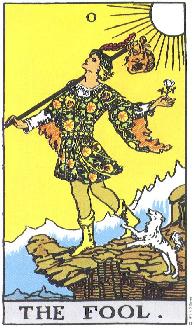
Der Hîlle Rache is Card II, the High Priestess.
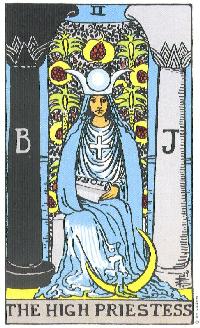
The Queen of the Night’s first aria is the Empress, Card III.
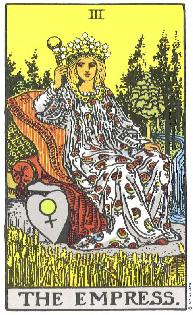
Card VI, the Lover, is Papageno’s Ein MÑdchen.
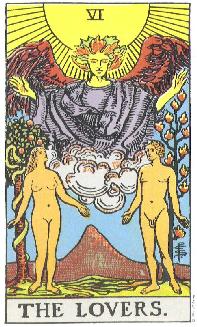
Card XXI, The World, shows a naked woman in the center surrounded by the four Evangelical creatures, which are signs of the four elements, i.e. the lion (for Leo, Sarastro), the angel or man (for Aquarius, Tamino), the eagle (a more advanced symbol for Scorpio, Papageno), and the bull (for Taurus, Monostatos) – this demonstrates the balance of all elements which is the culmination of all earlier cards.
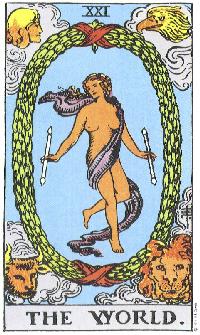
Did the Plot Change from its Original Plan?
It has been suggested that the opera was to be a telling of the Lulu fairy tale story, and that the plot was changed after Mozart and Schikaneder saw another singspiel, at the Leopoldstadt Theatre, called Die Zauberzither, oder Kaspar der Fagottist, which had a similar plot. Not wanting to be accused of plagiarizing, it is suggested that they changed the story mid-stream.
According to this theory, the character Sarastro would have been truly evil and Tamino would have set out on a conventional rescue to reclaim the kidnapped daughter of the Queen of the Night. Instead, when Mozart and Schikaneder discovered that they had been scooped, they decided not to rewrite what they had already done, but rather to insert a lengthy conversation between Tamino and the First Priest at the gate of Sarastro’s temple in which the First Priest informs Tamino that Sarastro is really not evil, but that he cannot yet reveal why Pamina has been abducted.
If Mozart and Schikaneder were worried, however, about being accused of plagiarizing a story called Der Zauberzither, why then did they not change the title of their opera? Is the story a mish-mash done over in the middle and patched together? Or should we agree with Otto Jahn who said: “It would be superfluous to criticize this libretto. The small interest of the plot, the contradictions and improbabilities in the characters and in the situations, are clear to all; the dialogue is trivial, and the versified portions are wretched doggerel, incapable of improvement by mere alteration.”
Alternatively, is there a better design to this work of art than Mozart and Schikaneder are given credit for by the likes of Jahn? Should we assume that Mozart, usually tagged with epithets of perfection and divinity, would create or participate in something so shoddy as this assumed patchwork job?
Look at the behavior of the Three Ladies in the beginning. Although they are supposed to be thought of as servants of the “good” Queen of the Night under the theory that the story underwent a large change, their motives seem suspect, and their fawning over Tamino, purely a response to his physical beauty, seems to have the quality of a morality play, like much of the rest of the story.
On the other hand, if one subscribes to the notion that no change had to be inserted mid-way through composition, one nevertheless must admit that the Queen of the Night, though an antagonist to Sarastro, is not fully “evil.” After all, her agents save Tamino’s life, show him Pamina’s portrait, and inspire in him a love for her. They also give him the magic flute, without which he will not survive the trials later in the opera.
Perhaps we should not think of the Queen of the Night and Sarastro so much as two extremes in a world which must be either exclusively good or exclusively evil, but rather we should see them more through the eyes of Eastern philosophies in which two halves must exist in order to have a balanced whole. The Day cannot exist without the Night. In other words, the Queen, the Three Ladies, and Monostatos are not simply allegories of evil which we should strive to expunge, but rather are allegories for parts of our characters which need to be accepted, acknowledged, and managed through the hard work of reason and love.
Final Thoughts on the Value and Values of The Magic Flute
There are, after all is said and done, only a few good, enduring stories. They have been told in Greek and Roman myths, in the Bible, in the Upanishads, and around campfires…. The Magic Flute is part of the ancient tradition of retelling meaningful stories.
The poet W. H. Auden sees The Magic Flute as an altogether hopeful story, because the characters have the freedom to choose their paths and to enjoy or suffer whatever fate comes from their choices – how happy they will be depends on the choices they make. They are free agents who can control. What they need is help in making the proper choices – a moral framework, a set of rituals and rules, the support of a brotherhood.
Papageno and Tamino are both Mozart himself – two different aspects of his character, of all of our characters. The child and the spiritual adult. The synthesis of Tamino and Pamina, and that of Papageno and Papagena, represents the creation of the perfect society which Mozart hoped the philosophy of Masonry and the French Revolution, and his own works, would inspire. This opera is one of those aspirational expressions of humanity which are so uplifting and energizing, and yet so frustrating and tragic at the same time.
These same principles have been identified and preached about for centuries. Nevertheless, we still struggle, apparently not having learned their salutary lessons. We can enunciate the principles, but we also seem to know that the struggle is all too often waged in vain. We’ve seen too many earlier experiments fail. We cannot permanently reside in, but rather can only taste, the joys of the utopia which The Magic Flute creates evanescently on stage.
Ultimately the works of great artists such as Mozart and Shakespeare are imbued with a sense of happy resignation to the joys of life such as we can find them, in spite of the cynical but realistic observation that our more noble strivings too often fail. As that happy student of world mythologies, Joseph Campbell, describes it, the “joyful participation in the sorrows of the world.”
The eternal question is always behind the works of these greatest artists – to participate, knowing all the while the inevitable end, the tragic flaws which will thwart the noble struggle, or, by action, to end the experience knowing not the outcome? The brooding Hamlet asks the question directly. And he is not alone. Those happy characters of Mozart’s Magic Flute, Papageno and Pamina, also contemplate, and nearly complete, their own suicides.
In The Magic Flute, at least, Mozart answers this lingering question in favor of the experiment. He understands the ambiguities of life and accepts them in favor of the experience, either the simple, hedonistic side of the experiences of Papageno – good food, good wine, a pretty wife – or the spiritual side of the experiences of Tamino – the appreciation and knowledge of wisdom and beauty in spite of all the other realities.
In fact, Mozart seem to revel in the ambiguities, not just to resign to them. They, perhaps, for Mozart are reason enough for the experience – the bitter needs the sweet, and vice versa, just as, in Eastern philosophies, the “good” needs the “evil,” and vice versa. Mozart is, in the end, life affirming. And his music conveys, as only music can, the subliminal and emotional message that the listener is not alone, that Mozart has been there too, that he is there with you now.
Sources:
W.H. Auden and Chester Kallman, The Magic Flute, English Version after the Libretto by Schikaneder and Giesecke, Random House (1955)
Brigid Brophy, Mozart The Dramatist, Da Capo Press, Inc. (1988)
Jacques Chailley, The Magic Flute Unveiled, Inner Traditions International, Inc. (1992)
Cliff Eisen, “Die Zauberflîte,” Liner Notes, Erato, Les Arts Florissants, William Christie, conductor (1995)
Joachim Kaiser, trans. by Charles Kessler, Who’s Who in Mozart’s Operas, Schirmer Books (1984)
Nicholas McNair, “‘Enter, Pursued by a Lion’: Hermetic Influences in The Magic Flute,” Liner Notes, Archiv, The English Baroque Soloists, John Eliot Gardiner, conductor (1996)
William Mann, “Die Zauberflîte,” Liner Notes, EMI Recordings Ltd., Vienna Philharmonic Orchestra, Herbert von Karajan, conductor (1988)
Charles Osborne, The Complete Operas of Mozart, Da Capo Press (1978)
Andrew Porter, “Notes on Die Zauberflîte” for Metropolitan Opera Program (1998)
Stanley Sadie, “The Magic Flute,” Liner Notes, DG, Berlin Philharmonic Orchestra, Herbert von Karajan, conductor (1980)
Encarta 98 Desk Encyclopedia by Microsoft (1996-1997)
Grove Encyclopedia of Music
